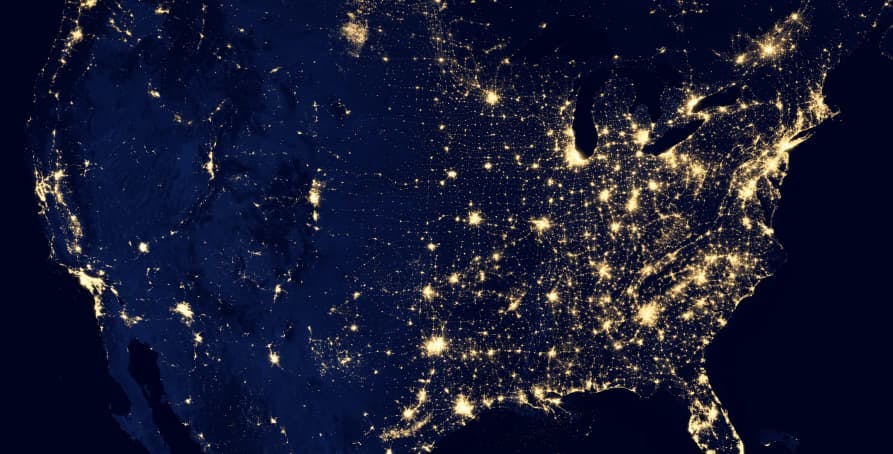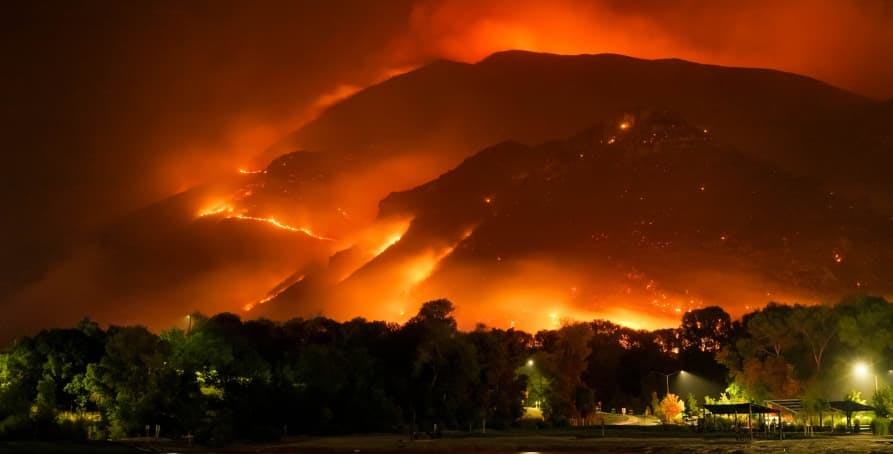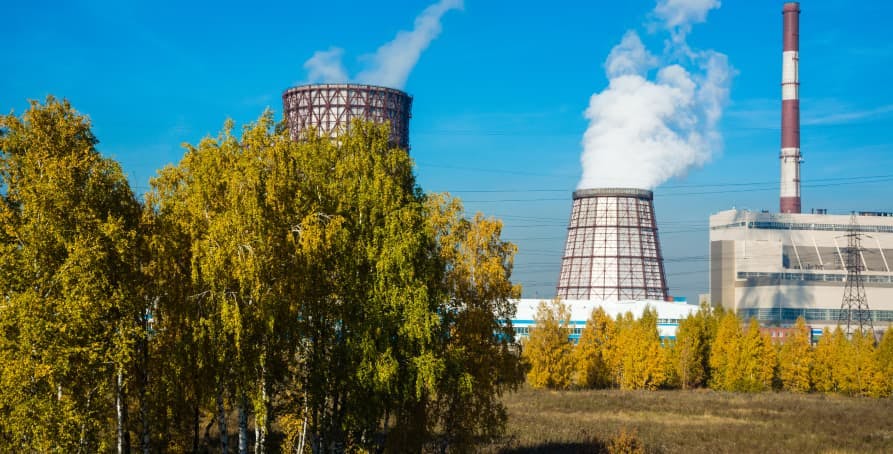ESG / CSR
Industries
What will the United States look like in 2050?



We’re always talking about how climate change will affect the world by 2050, but what about the United States specifically?
The United States is a vast country with different climates, cultures, and topography – none of which will make any area less immune to the current and future effects of climate change.
In this article, we’ll discuss how the U.S. currently works to fight climate change, how it will affect the U.S. by 2050, and what the country could do to mitigate further damage from global warming.
What does the United States look like today, in the 2020s?
For younger generations, the United States may not appear to be in deep peril – but older generations can remember a time when the United States was not approaching the impending doom of 2050 predictions by any means.
👉 One of the best examples is the city of Los Angeles – which was once sunny and clear nearly every day of the year, only to now be replaced by consistent smog, smoldering temperatures, and deteriorating air quality.
As of today, the United States is still functional in the midst of climate change, but the waters are getting shakier by the minute – especially seeing as 2023 brought about numerous natural disasters that have wreaked havoc on the country’s economy and overall spirit.
Daily life is starting to change in the U.S., as summers become hotter and winter storms grow unpredictable – Americans are beginning to realise that the effects of climate change are here to stay, and will only get worse as we inch towards 2050.
Here are just a few of the incidents that occurred as a result of climate change in 2023:
- Maui wildfires
- Dangerous Air Quality Index in the U.S. following Canadian wildfires
- Muddy circumstances at Burning Man which left tourists stranded

How will climate change have affected the world by 2050?
2050 is known to be a pivotal year in the world of climate change, as numerous sectors of the world are set to be drastically impacted by 2050.
Examples of what could occur by the year 2050 if no action is taken to mitigate the current effects of climate change include the following:
- Healthcare & Public Health – As health insurance already poses a serious threat to many Americans today, this is bound to get worse as temperatures continue to skyrocket – as resources will continue to grow sparse, such as viable drinking water. In fact, the WHO predicts that deaths will increase on average by 250,000 annually between 2030 and 2050 – specifically due to malnutrition and heat stress, all of which could be avoided by fighting climate change.
- Water & Waste Management – Seeing as bodies of water such as oceans, lakes, rivers, and streams remain vulnerable to the effects of global warming – it is estimated that by 2050, up to half of the world’s population will live in areas prone to water scarcity. In addition to this, global waste is set to grow by 70% by 2050 – demonstrating how both improved water and waste management will be essential to master before 2050.
- Air Quality – Wildfires are becoming more common all over the world, from Canada, Hawaii, and Australia – and the effects often spread elsewhere, such as by emitting wildfire smoke to other regions of the world and impacting their air quality. In fact, air quality will get so bad – it will become the leading cause of environmentally related deaths by 2050.
- Infrastructure – Investing in a home or rental property in 2050 is likely to become far more difficult than it is today, seeing as natural disasters such as wildfires, hurricanes, and tornadoes threaten the value or interest rates of the property in addition to deteriorating power grids.
- Agriculture – Warm temperatures don’t only make your summer activities more miserable, but it makes it next to impossible for farmers to produce edible crops – seeing as by 2050, food production will not be sufficient enough for our global population, which is currently estimated to total at nearly 10 billion people by 2050.
- Urbanization & Daily Life – Seeing as up to 14 cities in the United States alone could be partially or completely underwater by 2050, many will end up relocating – often to areas where dense populations will overwhelm the cities and create new issues. Ultimately, urbanization is inevitable in the midst of climate change – and could reach pique consequences by 2050. In fact, NASA has estimated that if the U.S. continues to emit greenhouse gas emissions at its current rate – we could tack on 1.5 degrees Celsius by the time we reach 2050. As a result, our daily lives will continue to change – such as with more remote work and extra precautions being implemented to prevent the effects a heatwave could have on human health.
👉 Climate change will most certainly have a profound impact on developing countries and vulnerable communities around the world, but how will climate change impact a country as resourceful and economically powerful as the U.S. in 2050?

What is likely to have changed in the United States by 2050?
According to the city of Chicago, changes specific to the United States will include a warmer atmosphere, more acidic oceans, erratic precipitation patterns, and continued rising sea levels – with some cities even being partially underwater by 2050 such as Miami and New Orleans.
Here are just a few examples of the day-to-day things that could change in the U.S. by 2050:
- Popular cities such as Miami, New Orleans, Annapolis, and Atlantic City could be partially underwater by 2050. This will prove difficult not only for residents needing to flee elsewhere, but for domestic tourism in the United States – seeing as Miami alone welcomed over 10 million domestic visitors in 2022.
- The continued natural disasters occuring in the U.S. will become normalised by 2050 if nothing is done to fight climate change, which could mean higher levels of eco-anxiety in the country – especially for younger generations that will continue to deal with the repercussion of previous administrations that overlooked the effects of climate change.
- Skyrocketing electricity and healthcare bills due to the newfound outrageous demand.
Flooding and droughts will become the new norm in cities that have previously been averse to this negative impacts of global warming – such as Baltimore and Washington D.C., located in the mid-Atlantic and known for being less prone to natural disasters.
However, what will most notably change in the U.S. is that by 2050 – the country will all around be noticeably warmer. Summers will be unbearably longer and winters will be shorter, and while that sounds like a dream for those suffering from seasonal depression – it isn’t good news for the United States as a whole.
Floods will spread toxic waste, cities will attract deleterious air pollutants, and American cult favorites like corn won’t be as easy to grow across the country anymore. Once gorgeous hikes in California will be nothing but a display of ash after a wildfire, and a snow covered New York City during Christmas could cease to exist.
While all some of these things may seem trite, they aren’t – as each of these circumstances will slowly chip away at the sense of adventure across the country, taking the joy out of classic American right-of-passages such as road trips. Cross-country adventures like these will lose their spark if everywhere in the United States eventually looks the same: dried up, brown, and lifeless.
👉 However, it is important to note that these negative changes aren’t surefire by 2050 – we can still change the course of climate change in the United States if we implement the appropriate actions to reduce greenhouse gas emissions.

What is currently being done to fight the effects of climate change by 2050?
Many countries around the world are drawing up treaties to work together in the fight against climate change, such as with the Paris Agreement – which works to help participating countries work towards net-zero emissions by 2050.
Often penned as, “Net Zero” – this global movement was implemented to help motivate countries to reduce their emissions by 45% from 2010 levels before 2030, ultimately reaching balanced emissions or “net zero” by 2050.
👉 It is important to note that while not all countries may be able to officially achieve net-zero, it is still worth the effort to work towards this goal – as it could still make a difference on where we will stand on climate change by 2050.
The United States has made its own individual efforts to take climate change more seriously, too. For instance, the new SEC Climate Disclosure Rule will require companies to report their environmental impact – similar to Europe’s Corporate Sustainability Reporting Directive, or the CSRD. In addition to this, there have been new efforts to pass more sustainable fashion laws and state legislation such as the Global Warming Solutions Act.
However, despite current president Biden being adamant on the “existential threat” that is climate change – many young Americans have been dissatisfied with how the country is handling climate change.
Are there any solutions to prevent some of our favorite cities in the U.S. from becoming obsolete in 2050?

What can we do to protect the U.S. from changing too much by 2050?
There are many things the United States could do to preserve its beloved cities.
However, the current issue is that many Americans are reluctant to phase out the use of fossil fuels entirely, as it could have an impact on the economy – with up to 68% of Americans believing that a mixed-energy approach is the best solution. While it’s good to be open to the production of renewable energy, the problem is that as long as emissions are being produced at all – global warming will persist, as will the negative effects we are already experiencing today.
👉 Evidently, the country is in dire need of serious reform – seeing as the United States continues to be the second largest emitting country in the world when it comes to greenhouse gas emissions.
However, some of the most effective solutions will require time and money on behalf of the United States, many of which the country continues to stall – such as building effective railroad travel and public transportation in major metropolitan areas across the country.
On that note, more federal action will be necessary over state-wide efforts – and while it isn’t bad for individual states to develop their own climate policies, teamwork is imperative for constructive progress in the fight against climate change.
Dissipated beaches and barren forests don’t have to be our reality in the United States by 2050, but in order to prevent it from becoming a reality – we will need to methodically prioritise our actions moving forward.
What about Greenly?
If reading this article about what the United States will look like in 2050 has made you interested in reducing your carbon emissions to further fight against climate change – Greenly can help you!
It can be difficult to adjust your business model to our changing world in the midst of climate change, especially as many businesses join the net-zero by 2050 movement, but don’t worry – Greenly is here to help! Click here to book a demo and get personalised expertise on how you can start to reduce your own emissions and decrease your environmental impact.
Greenly can help you make an environmental change for the better, starting with a carbon footprint assessment to know how much carbon emissions your company produces.




